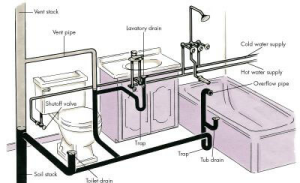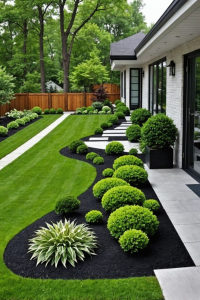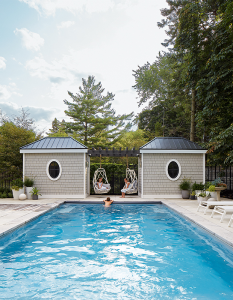A licensed General Contractors Boston has premium connections with vendors, suppliers, subcontractors, and manufacturers. This gives them a competitive edge and often enables them to complete projects within budget or even under budget on many occasions.
They also stay up to date on code updates, guaranteeing that your project is built correctly from the start. This prevents costly revisions and rework.

Reputation
A person’s reputation is a complex construct that encompasses many aspects. It is shaped by their actions, their performance, and how their moral compass guides them. It is also based on the collective opinion of a community or market. For general contractors, their reputation is crucial because it enables them to secure new projects and attract top-tier employees.
Licensed general contractors have the skills, experience, and resources to manage construction projects of any size. They are responsible for developing project schedules, procuring materials, managing subcontractors, and ensuring compliance with building codes. They also communicate with clients to manage expectations and provide regular updates throughout the process.
If you’re looking for a general contractor to perform work on your home remodeling project, it is essential to hire one with a good reputation. Reputable contractors will include their license number in all of their advertising and business cards. In addition, they will have a link to the state’s CSLB website so you can check their license status.
Getting a general contractor’s license isn’t an easy task. It requires a lot of time, money, and energy. There are several steps to follow, but the first step is researching your specific locality’s licensing requirements. Most municipalities have official websites dedicated to contractor licensing, which offer detailed information on requirements and application processes.
Experience
If you work with a licensed general contractor, you can be sure that they follow state and local rules and regulations. They’ll also carry workers’ compensation and liability insurance to protect you in the event of an accident or injury. The licensing process differs by state, but most require the qualifying party to pass a series of exams. They’ll also need to submit financial information, a surety bond, and background checks for the qualifying party and officers of the firm.
Whether you’re a home remodeler or commercial construction company, licensed general contractors can provide insight into best practices and how to handle challenges that come up during your projects. They can advise on building code compliance, zoning requirements, and permit applications. Plus, they can make recommendations on materials, labor costs, and timelines.
A licensed GC will provide clear and transparent communication throughout the project. They’ll be your single point of contact for any questions and concerns, keeping you updated on progress and fostering accountability.
Many people choose to earn a bachelor’s degree in construction management, civil engineering, or a related field before pursuing a licensure exam. Others opt for vocational school or apprenticeship programs that offer hands-on training and experience. Licensing can open up new opportunities for business owners, and it shows a commitment to ethical practice and professional standards in the industry.
Licensing
Most states and localities require contractors to have a license to perform construction work. A contractor with a license is eligible to bid on larger projects, increasing their earning potential. In addition, many clients prefer to hire licensed contractors, providing additional business opportunities.
Licensing is a complex process, but there are plenty of resources available to help contractors navigate it. Some offer contractor licensing classes that teach students about state laws and regulations, while others will help newcomers to the industry secure their licenses.
In addition to licensing requirements, the state requires contractors to have insurance coverage. The exact coverage needed varies by region, but it must include workers’ compensation, general liability, and commercial property. A reputable insurance provider can help contractors understand these requirements and find a policy that meets them.
A licensed general contractor can manage subcontractors, a team of workers that specializes in different parts of the construction process. These subcontractors may include plumbers, electricians, bricklayers, carpenters, painters, roofers, and iron workers. Having a specialized team in place can expedite the construction process, which can save weeks or even months. Additionally, it can ensure that all work is completed to the highest industry standards. In addition, the team can help to avoid unforeseen problems that can slow down the project.
Insurance
A licensed general contractor is required to carry workers’ compensation, liability, and professional insurance, which protects both themselves and you in the event of a workplace accident or property damage. Those who work as unlicensed contractors, on the other hand, do not.
Licensing requirements vary state by state, but most require applicants to pass an exam that tests their knowledge of trade best practices, industry regulations, and business standards. Some also need proof of experience and financial records. Other requirements, such as pulling permits and carrying liability insurance, are universal.
Licensed general contractors also maintain compliance with local and state laws, minimizing the risk of costly fines or project delays. Additionally, they can pull all the necessary permits on your behalf and oversee each phase of construction to ensure everything goes smoothly.
As the main point of contact for your home building or remodeling project, a licensed general contractor will keep you up to date on any changes in schedules or timelines. And they’ll make sure that your project meets all your specifications and budget requirements. Even if there are complications, your GC will have experienced them before and know how to handle them quickly and efficiently to avoid costly setbacks. This saves you time and money in the long run. Plus, many established and professional GCs offer warranties or similar guarantees on their work, giving you peace of mind that your investment is protected.








